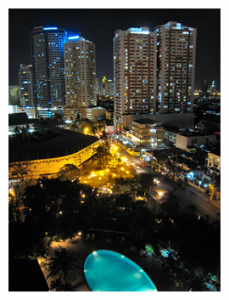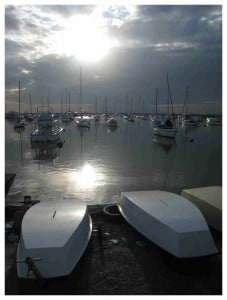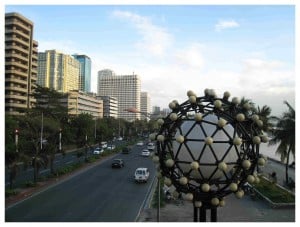1st ICODEL Conference
Manila, Philippines
23-24 February, 2012
 The first International Conference on Open and Distance E-learning (ICODEL), was held at the Century Park Hotel in Manila from 23-24 February 2012, with the pre-conference workshops having taken place on 22 February. It was great to be back in the Philippines only months after the GloCALL Conference was held here in October last year – a sign, it seems, of increased interest in the field of e-learning in this country.
The first International Conference on Open and Distance E-learning (ICODEL), was held at the Century Park Hotel in Manila from 23-24 February 2012, with the pre-conference workshops having taken place on 22 February. It was great to be back in the Philippines only months after the GloCALL Conference was held here in October last year – a sign, it seems, of increased interest in the field of e-learning in this country.
In her opening plenary, entitled The State of the Art in Open and Distance E-learning, Denise Kirkpatrick spoke about the 2012 Horizon Report, mentioning currently influential technologies such as mobile computing, electronic books, and Open Education Resources, and indicating the future potential of augmented reality, game-based learning, learning analytics, and gesture-based computing. Major contemporary challenges, she suggested, include:
- Digital literacies
- Metrics of evaluation for new forms of publishing
- New forms of education and competition (universities’ roles are changing in view of competition from other institutions, and in face of the need to prepare students for lives in an increasingly complex world)
- Keeping up
Open and Distance Learning, she suggested, must be about:
- Connectedness
- Community
- Communication
- Collaboration
- Convenience
- Connections
Today’s students are mobile and connected socially and technologically. Social media platforms are becoming an important part of learners’ lives and we need to think about how we can leverage them in the service of education.
Schools and universities, she argued, need to be learner-centric digital environments. There should be a focus on problem-solving and helping students to think creatively. Collaborative learning is important, involving students in formal learning in teams and projects, informal learning with buddies and mentors, and multiple learning environments. Collaboration is also important for educators, who are increasingly engaging in interdisciplinary and cross faculty learning, and internationally distributed research.
She gave examples of current uses of augmented reality, e-books, virtual worlds like Second Life, and social networking sites like Facebook. There can be a link, she observed, between social networking sites and open educational resources, with the latter becoming much more powerful when we focus on the social interaction around them. It’s important to enhance the power of the social and investigate ways of learning together.
Learning analytics is an area that will grow quickly, she predicted, as a way of increasing the quality of student learning and achievement, thanks to interventions derived from looking at the learning analytics. This will also allow us to personalise learning materials to a greater extent, and help students take control of their learning by allowing them to visualise their own learning.
In short, she suggested, we are in a period of major change and growth in the provision of education.
In his talk, Integrating Media and Information Literacy in Open and Distance E-learning, Jose Algaran described the importance of providing guidelines to students on the use and value of materials in multiple media and on multiple platforms. Media and information literacy competencies are an important indicator of students’ readiness to take courses online, and should also inform instructional design. Given that the media and the internet are the key sources of information in the contemporary world, media and information literacy are absolutely crucial skills and are essential to enabling lifelong learning.
In his talk, An International Survey on Media Use for Learning, Michael Grosch opened with a reminder that books are in fact a form of media. Text, he suggested, will still be the most essential medium for learning in the future, even if it is presented in electronic formats.
He went on to say that learners don’t accept all media equally, and that the media offered by teachers are often rejected by learners. External, self-searched and web 2.0 media are becoming more and more important for learning.
Inspired by the ECAR surveys, he developed his own survey instrument to get an overview of students’ use of 48 different media services (print, online, web 2.0, e-learning). Surveys were conducted at about 15 universities, predominantly in Germany and Thailand. Wikipedia, Google and email, he found, were the three most used media services by students, with some commonly discussed web 2.0 tools like blogs, wikis and Twitter being ranked relatively low. Teachers, he found, read more books than students, while they use social media on a very low level.
He concluded that students use a broad variety of media for learning, but this is self-controlled, with students making up their own minds about which media to use, rather than doing what teachers tell them to do. Text media, he reiterated, play a key role in the learning environment, with electronic texts set to become very important in the future. Interestingly, his data suggest that the most intense media users may also be the better students.
In his talk, Open-source and Free Software for In-class Online Surveys and Data Analysis, Enrique Frio spoke about the value of conducting surveys online, recommending the use of free software such as Kwiksurveys and PSPP (a free alternative to the proprietary SPSS). This cuts down enormously on many of the manual aspects of survey writing, data collection, and data analysis and display.
The second plenary involved three speakers addressing the topic of Issues, Challenges, Reforms and Solutions in Open and Distance E-learning. The first speaker, Tian Belawati, Rector of Universitas Terbuka, Indonesia, spoke about the role of the Universitas Terbuka (Open University) in bringing opportunities for equal access to higher education to the whole of Indonesia. Its student base shows that it is having success in “reaching the un-reached”. Because of the lack of penetration of the internet in parts of the country, the UT works through 37 regional centres. The UT is currently in the process of developing tablet-based materials, and, given a mobile phone penetration of around 73% in Indonesia, it is exploring the use of mobile phones in education, including the use of personalised SMS messaging.
The second speaker, Grace Javier Alfonso, Chancellor of the University of the Philippines Open University, talked about the different domains of distance learning (where teachers and students are physically separated), open learning (which focuses on access for all), and ODL, or open and distance learning (which fuses both concepts). She indicated that e-learning (teaching with new technologies) shares common ground with ODL, but is not the same, since much ODL delivery worldwide still makes little use of new technologies. ODEL, or open and distance e-learning, fuses all three notions.
ODL has been affected by a number of factors in recent years:
- Transnational education (possibly leading to a need for international accreditation)
- Quality assurance (which does not yet exist for ODL in the same way as face-to-face education)
- Digitization of distance education (which is quite varied across institutions)
- Changing profile of students (with a greater range of students wanting to update their qualifications)
- Open Educational Resources (with more and more institutions openly sharing their resources at no cost)
The University of the Philippines Open University (UPOU) was established in 1995 as the fifth component institution of the University of the Philippines (UP), with the aim of opening up education to all those who are unable to access it in traditional ways. It is currently exploring ways of integrating ODL with e-learning. Because its inception coincided with the inception of the internet in the Philippines, the UPOU did not invest very much in older ODL infrastructure. The rapid increase in internet usage in the Philippines bodes well for e-learning.
ODEL, she concluded, is a world view and an expression of values. It is a construction of how DL, OL, and EL are enacted in the context of the ‘Universitas’. The interweaving of these components can bring about social transformation, but there are some issues here:
- There is a need for a plurality of ideas, which should come from the developing as well as the developed world.
- There is a need for academics to disseminate knowledge in multimedia formats to reach audiences more familiar with the grammars of audio-visual language.
- There is a need to recognise the non-linearity of the medium, with hypermedia allowing for the expansion of the democratic space.
- There is a need to instil the ‘Universitas’ ethos, which is traditionally propagated in physical spaces, in the electronic environment, and to consider how, for example, social networking services can function as scholarly platforms.
- There is a need to consider the digital divide to avoid the marginalization of the disadvantaged, perhaps by combining EL with more traditional ODL technologies (like television and radio).
The third speaker, Eing-Ming Wu, President of the Open University of Kaohsiung, Taiwan, argued that we are living in the time of the city defining the nation, advancing the state, and enriching the citizens. Lifelong learning, he suggested, enables urban life. The city should become the most resourceful lifelong learning platform, and public schools (at all levels) should become the most accessible lifelong learning centres. Learning, he suggested, enables a better quality of “living, loving and earning”. Drawing on the EU definition of a learning city, he suggested it should promote “city prosperity”, “society security” and “individual fulfilment”.
The Kaohsiung Open University is the only Taiwanese open university founded by a city. Its key characteristics are that the learning it provides is affordable, accessible, achievable and amplifying. The city, he said, becomes the campus of the university – and the university becomes the city’s universe.
Although I had to leave the conference early to get to the CamTESOL Conference in Cambodia, it was clear from the first day that there are many interesting developments occurring in ODEL, both in the Philippines and the wider region. No doubt there will be many future conferences expanding on the themes broached in the 1st ICODEL Conference in Manila.

